AI Enthusiast Weekly(2024-06-07) : Apple's WWDC 2024: Software Updates and Potential AI Enhancements
Apple's WWDC 2024: Software Updates and Potential AI Enhancements
Apple's WWDC 2024 commences on June 10, focusing on software updates and developer tools. The keynote, scheduled for 10 a.m. ET, will unveil iOS 18, iPadOS, macOS 15, and more, with live streaming available on Apple's website and YouTube, though potential lag may occur on the latter platform.
Critics have consistently noted Apple's delay in adopting generative AI, a technology capable of creating content from existing data. CEO Tim Cook, hinting at transformation, may announce a speculated collaboration with OpenAI, famous for its GPT models that produce text akin to human writing.
Anticipation for AI improvements in iOS 18 is substantial, with potential integration into macOS 15. Hardware updates, typically unpredictable at this software-focused event, are unlikely this year, despite precedents such as Apple Silicon and the Vision Pro.
The event will also showcase significant design alterations to the iPhone's Calculator app, a small yet significant update. TechCrunch plans to provide live coverage from Apple Park, ensuring timely updates.
Scores Source>>AI News
Nvidia Reaches $3 Trillion Valuation, Becomes World's Second Most Valuable Company
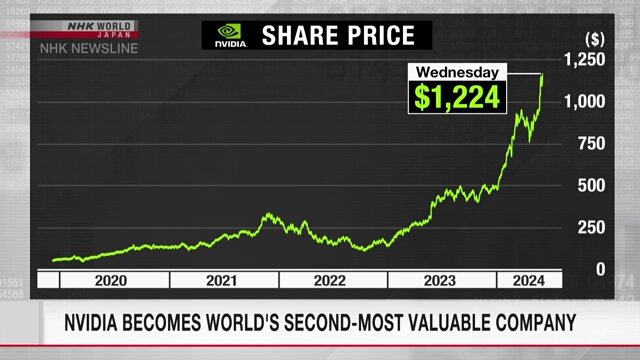
Nvidia, a U.S. semiconductor company, has ascended to the position of the world's second-most valuable company, surpassing Apple. This leap is fueled by a surge in demand for chips that drive artificial intelligence.
On Wednesday, Nvidia's stock price surged over 5% on the Nasdaq, closing at $1,224. This surge propelled the company's valuation beyond $3 trillion for the first time, making it the third entity to reach this milestone, following Apple and Microsoft.
Nvidia's financial performance is equally impressive, with net profits multiplying more than seven times compared to the same period last year.
Semiconductor: A chip that acts as an essential component in computers and other electronic devices, facilitating the processing and control of electronic signals.
Artificial Intelligence (AI): Technology that enables machines to perform tasks that typically require human intelligence, such as visual perception, speech recognition, decision-making, and language translation.
Scores Source>>Nvidia Surpasses Apple in Market Value Amidst AI Boom
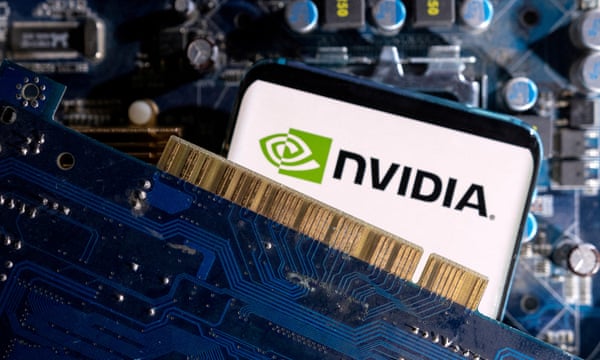
Nvidia, a leading maker of AI chips, has soared to a staggering $3 trillion market value, surpassing Apple to become the world's second most valuable company. This milestone reflects a significant shift in the tech landscape, where Apple, once dominant with the iPhone, now faces stiff competition.
Nvidia's stock surged 147% in 2024, driven by overwhelming demand for its high-end processors. Major tech players like Microsoft, Meta, and Alphabet are aggressively expanding their AI capabilities, fueling this demand. In contrast, Apple struggles with declining iPhone sales and fierce competition in China's smartphone market.
The tech world is rapidly pivoting towards AI, and Nvidia, with its cutting-edge technology, is at the forefront. This surge in value underscores a broader trend where AI is not just a feature but a core driver of growth in the tech industry.
Explanation:
- Market Value: The total value of all a company's shares of stock.
- AI Chips: Specialized processors designed to handle the complex computations required for artificial intelligence tasks.
- Stock Split: A corporate action where a company divides its existing shares into multiple shares to boost the stock's liquidity.
Japan's Legislative Push for 2nm Chip Production in AI and Autonomous Driving
Japan aims to strengthen its tech industry by legislating financial support for the production of 2nm chips, which are essential for AI and autonomous driving technologies. The government's "Robust Policy" draft focuses on legalizing and funding the mass production of next-generation semiconductors, a critical step towards achieving self-sufficiency in these advanced technologies.
The plan involves legal measures to ensure consistent financial backing and includes initiatives such as autonomous vehicle operation schedules and partnerships between universities and businesses. Recent actions include significant funding for Sumco, a major wafer manufacturer, and increased support for Rapidus to achieve 2nm chip production. Japan has also allocated funds to support semiconductor research by Taiwan's TSMC.
This strategy highlights Japan's commitment to leading in advanced technology sectors, ensuring its relevance in the global tech race. By focusing on 2nm chips—the forefront of semiconductor technology—Japan positions itself as a leader in innovation, crucial for future advancements in AI and autonomous vehicle capabilities.
Scores Source>>AI-Generated Anime Images Raise Copyright Concerns
AI Threatens Anime Copyrights
In Tokyo, a surge in AI-generated images mimicking popular anime characters is raising alarms. Nikkei's investigation of 90,000 images revealed 2,500 suspiciously similar to original artwork. These AI creations, often shared online, blur the lines of copyright.
AI's Evolution and Impact
Generative AI, a technology that crafts new content from existing data, has advanced to animate single comic frames. This capability, demonstrated with manga artist Shuho Sato's help, showcases AI's potential but also its risks.
New Piracy Frontier
The misuse of generative AI could redefine piracy, threatening Japan's animation industry. AI's ability to mimic and reproduce copyrighted material without consent poses a significant challenge.
Reflection
The clash between advancing technology and traditional copyright laws is inevitable. As AI evolves, so must our legal frameworks to protect creative works. The balance between innovation and respect for original artistry is crucial.
Scores Source>>NVIDIA CEO Announces Expansion Plans in Taiwan

NVIDIA CEO Jensen Huang has hinted at a potential expansion in Taiwan, suggesting the establishment of an AI supercomputer center in Kaohsiung and a research facility near Taipei. This announcement was made during a dinner hosted by Quanta Chairman Barry Lam at a private kitchen in Taipei. Huang, known for his charismatic presence, playfully interacted with a balloon likeness of himself, positioning it at the entrance as if to "interview" with the press.
The event celebrated the enduring partnership between NVIDIA and Quanta, emphasizing their collaborative work in constructing AI supercomputers. Huang underscored the pivotal role of Taiwan in NVIDIA's global strategy, revealing plans to recruit hundreds of engineers and specialists in chip design and AI software.
Despite the jovial atmosphere, Huang's remarks highlight Taiwan's strategic importance in the tech industry, especially in the fields of AI and high-performance computing. His comments reflect a growing commitment to the region, capitalizing on its skilled workforce and technological infrastructure.
AI Supercomputer: A high-performance computing system tailored for artificial intelligence tasks, capable of efficiently processing vast amounts of data and complex algorithms.
Private Kitchen: A type of dining establishment in Taiwan that provides a more intimate and exclusive dining experience, often featuring unique or specialized cuisine.
Scores Source>>Nvidia Surpasses Apple in Market Value Amid AI Boom
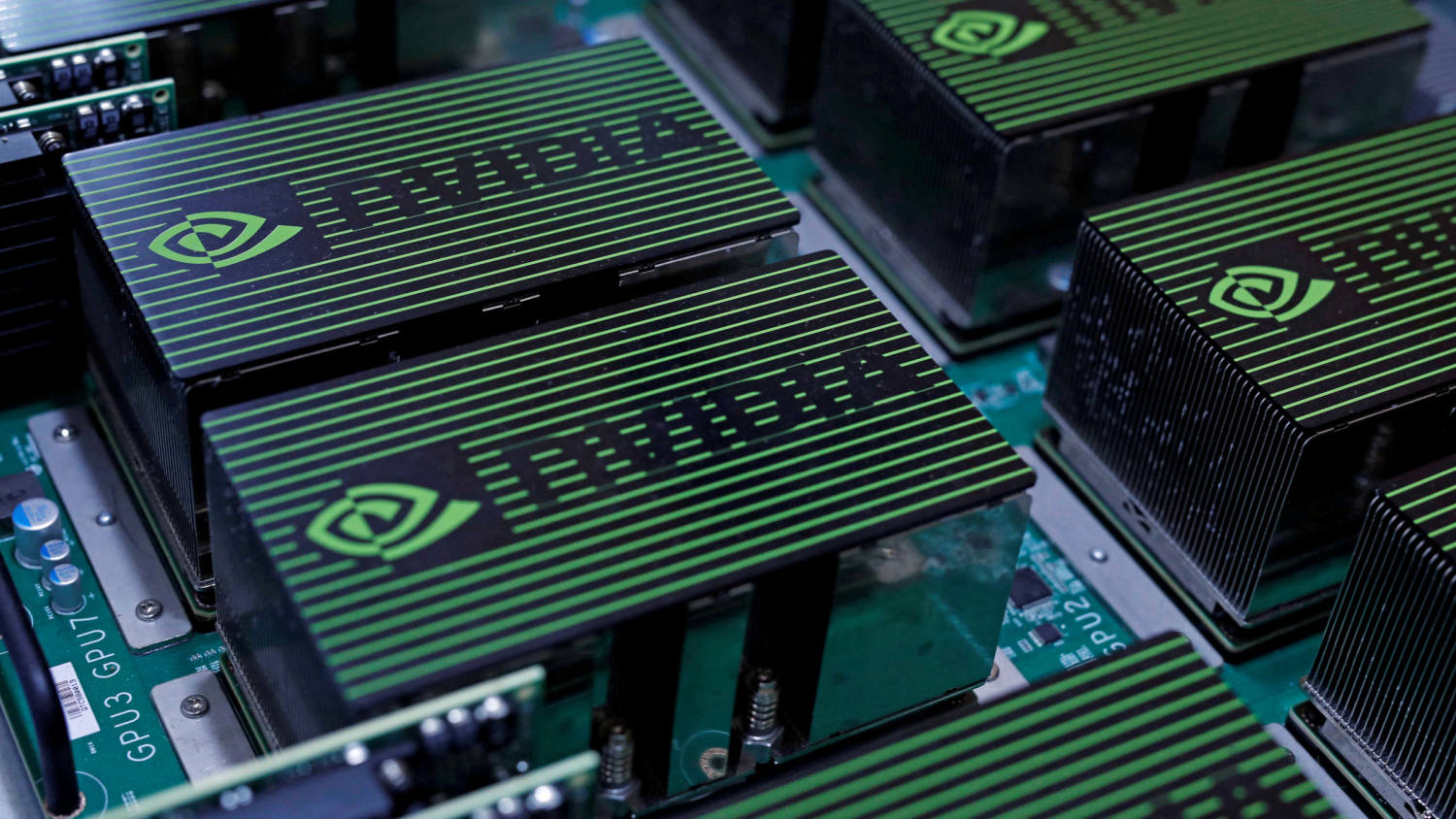
Nvidia, a leading manufacturer of AI chips, has eclipsed Apple in market value, soaring to $3.012 trillion. This milestone positions Nvidia as the second most valuable company worldwide, trailing only Microsoft, valued at $3.15 trillion.
The surge in Nvidia's market value is largely attributed to a dramatic increase in demand for its AI processors. This demand is being driven by tech behemoths such as Microsoft, Meta, and Alphabet, which are rapidly enhancing their AI capabilities. Nvidia's stock has experienced an astonishing 147% growth in 2024 alone, a clear indication of robust investor confidence in the future of AI.
Conversely, Apple is grappling with issues including declining iPhone sales and fierce competition in the Chinese market. Some investors view Apple as lagging in its integration of AI into its products compared to its industry counterparts.
Jensen Huang, CEO of Nvidia, has emerged as a significant figure in the tech sector, renowned for steering the company's AI-centric expansion. Despite its rapid ascent, Nvidia maintains a relatively modest price-to-earnings ratio, currently trading at 39 times expected earnings, a decrease from over 70 a year prior.
This change in market leadership highlights the escalating significance of AI in both technology and business strategies, foreshadowing a future where AI capabilities may be pivotal in determining corporate success.
Scores Source>>Zhipu AI Releases GLM-4 Open Source Model and Its Broad Application Prospects
Summary: Zhipu AI recently released the GLM-4 open-source model, a significant technological advancement that marks a new milestone in the AI field. The GLM-4 not only outperforms Llama3 in performance but also supports multiple languages and visual models, greatly expanding its application scope. Additionally, Zhipu AI launched the Qingyan App and MaaS 2.0 platform, the former enabling multi-agent collaboration, and the latter integrating new models and offering a one-click fine-tuning feature, reducing usage costs and enhancing user experience. AI Lao Luo, the first digital employee of Zhipu Qingyan, has also been made available to the public, showcasing the potential of AI in personalized services.
Insight: The release of GLM-4 is not only a technological breakthrough but also a strong push towards the democratization of AI. By open-sourcing, Zhipu AI enables more developers and businesses to utilize this advanced technology, accelerating the pace of innovation and application. Meanwhile, the upgrade of the MaaS platform, particularly its one-click fine-tuning feature, lowers the technical threshold, allowing non-professionals to easily leverage AI technology, which will undoubtedly promote the widespread adoption of AI and the process of social intelligence.
Explanation:
- GLM-4 Open-Source Model: An advanced AI model made available to the public through open-source, meaning anyone can freely use and modify the model, promoting widespread dissemination and application of the technology.
- Multi-Agent Collaboration: Multiple AI agents can work together within the same dialogue box, jointly completing tasks, enhancing work efficiency and flexibility.
- One-Click Fine-Tuning Feature: Users can adjust the AI model through simple operations to suit specific application needs without requiring deep technical knowledge.
- Digital Employee: Refers to a virtual employee created by AI technology, capable of performing various tasks such as customer service, data analysis, etc., improving work efficiency.
Articles
AI-Equipped CubeSats to Enhance Wildfire Detection in Australia

Summary:
Australia is set to revolutionize wildfire detection with AI-equipped CubeSats by 2025. These small satellites, using onboard AI, process high-resolution images from space at unprecedented speeds—500 times faster than ground-based methods. This leap allows early detection of fires by identifying smoke before flames intensify, enabling quicker response to minimize damage.
Key Points:
- CubeSats: Miniature satellites, typically the size of a briefcase, designed for low-cost space missions.
- High-Spectral Imaging: Captures light across many narrow wavelengths, providing detailed surface information.
- Onboard AI: Enables real-time image analysis directly in the satellite, reducing data transmission needs and enhancing response times.
Insight:
The integration of AI with CubeSats marks a significant stride in disaster management. By swiftly identifying threats, this technology not only aids in fire prevention but also holds potential for broader environmental monitoring and disaster response. The scalability of CubeSats and their cost-effectiveness make them ideal for creating a constellation of satellites that could globally enhance early warning systems.
Scores Source>>Eko Health Secures $41M for AI-Enhanced Heart Disease Detection
Eko Health, a 2013 startup, has revolutionized the stethoscope by integrating AI, enhancing early and precise detection of heart diseases. Their device, utilized by over 500,000 healthcare professionals, captures chest sounds and ECG data, which is then analyzed by their AI for potential heart conditions.
Conventional stethoscopes frequently overlook nuanced differences in heart sounds, resulting in delayed or inaccurate diagnoses. Eko's AI technology merges heart sound analysis with cardiac rhythm evaluation, offering insights comparable to a cardiologist's expertise, even in general medical settings.
Recently, the FDA granted approval for Eko's AI to detect early signs of heart failure and heart murmurs, which may indicate defective heart valves. Research indicates that Eko's AI surpasses primary care physicians in identifying heart diseases.
With a $41 million Series D funding, Eko aims to enhance its AI capabilities for detecting pulmonary conditions such as asthma and pneumonia, and to broaden its market reach globally.
The integration of AI in healthcare tools, exemplified by Eko's stethoscope, could dramatically improve disease detection and patient outcomes, transforming routine check-ups into potentially lifesaving interventions.
Scores Source>>InPink: A Women-Only Job Marketplace for Artists Promoting Fair Pay and Opportunities
Shira Yevin, punk singer and founder of InPink, has established a women-only job marketplace catering to artists and other professionals within the music and live entertainment sector. InPink was conceived to tackle the unique challenges faced by women and non-binary creatives in traditionally male-dominated industries, addressing issues such as opportunity discovery, administrative management, and equitable compensation.
Following Yevin's initial venture, Gritty in Pink, InPink was launched to connect its users with prominent brands and has successfully arranged numerous high-profile engagements. The platform has managed transactions totaling $300,000 and currently serves over 3,000 users.
InPink is in the process of developing AI-powered tools, including a fair pay scale and a matching tool, designed to streamline and equalize the hiring process. These innovations are slated for release by early 2025.
Additionally, InPink is expanding its reach into related entertainment fields, such as sports, evidenced by its current partnership with Angel City Football Club. The platform has secured over $500,000 in funding and is on the verge of closing a $1 million pre-seed round, positioning itself as a pioneering influence in the evolving landscape of work within the entertainment industry.
DEI (Diversity, Equity, and Inclusion) encompasses practices and policies aimed at fostering the representation and involvement of diverse groups, including women and non-binary individuals, within a workplace or industry.
Scores Source>>NVIDIA CEO Huang Renxun Unveils Blackwell Architecture and AI Factory at COMPUTEX 2024




At COMPUTEX 2024, NVIDIA CEO Huang Renxun unveiled the Blackwell architecture GPU and AI Factory, sparking industry interest. Amidst the tech showcase, a moment of personal interaction captured public attention: Huang signing a fan's attire and phone case, a gesture that stirred online debate.
Huang, cautious yet accommodating, questioned the appropriateness before complying with the fan's request. The fan's exhilaration, shared on social media, mirrored the fervor surrounding NVIDIA, whose stock surged, nearing a $3 trillion market cap. Analysts attribute this growth to NVIDIA's dominance in AI hardware and robust product innovation.
Blackwell Architecture: A new generation of GPU technology designed by NVIDIA, focusing on enhanced performance for AI and machine learning applications.
AI Factory: A term used to describe a large-scale system of AI servers and infrastructure, optimized for the rapid development and deployment of AI technologies.
Market Cap: The total value of all a company's shares of stock. In this context, NVIDIA's market cap reflects its financial strength and investor confidence in its future prospects.
Scores Source>>Sichuan University team achieves breakthrough in VCSEL technology, enhancing electro-optical conversion efficiency.
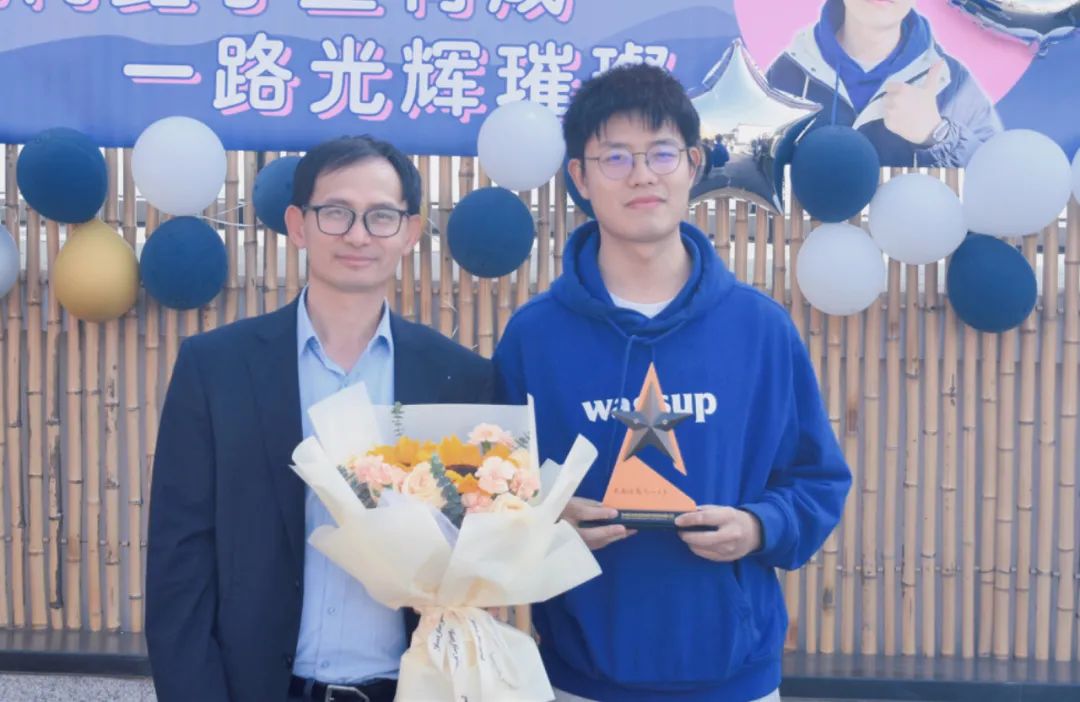




Summary: Professor Wang Jun and his team at Sichuan University have achieved a significant breakthrough in the field of Vertical Cavity Surface Emitting Lasers (VCSELs), successfully developing a 15-junction VCSEL with an electro-optical conversion efficiency of 74%, breaking a two-decade stagnation in efficiency within the field. This achievement not only enhances the efficiency of semiconductor lasers but also heralds innovations in areas such as autonomous driving, optical communications, and AI computing data centers. VCSELs, known for their low cost, high reliability, and narrow spectral linewidth, are widely used in consumer electronics and intelligent sensing systems.
Insights: The innovation of Wang Jun's team lies in the adoption of a multi-junction cascade structure, which significantly boosts the power and efficiency of VCSELs. This structure not only enhances the performance of the laser but also reduces costs, posing a challenge to existing lidar technologies. Moreover, the successful development of this technology foresees extensive applications in high-data-demand areas such as AI and autonomous driving, particularly in addressing energy consumption issues.
Explanation of Terms:
- Vertical Cavity Surface Emitting Laser (VCSEL): A type of laser where the emission direction is perpendicular to the surface of the chip, offering better beam quality and lower production costs compared to traditional edge-emitting lasers.
- Electro-Optical Conversion Efficiency: A measure of how efficiently a laser converts electrical energy into light energy, with higher efficiency indicating less energy waste and superior performance.
- Multi-Junction Cascade Structure: A design that involves stacking multiple laser emission layers on a single chip to increase the output power and efficiency of the laser.
AI and PC Industry: Nvidia's Rise and Intel's Challenges
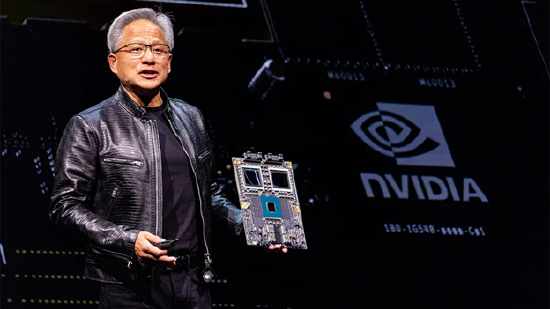

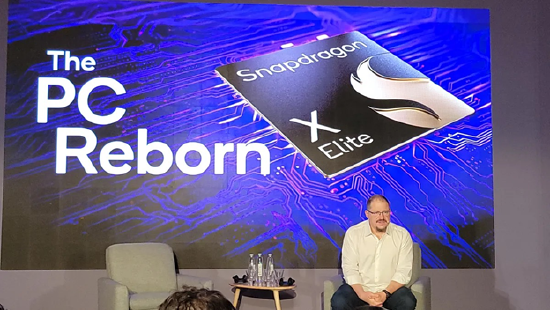
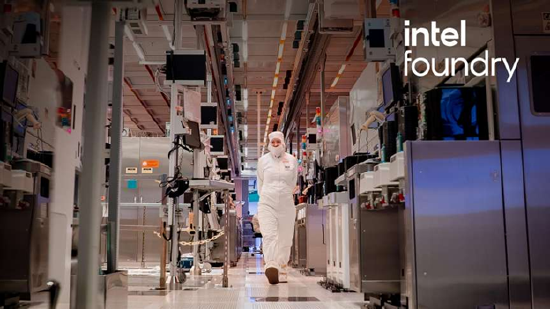
Summary and Insights:
AI and PC Industry Dynamics: At Computex, leading chip manufacturers demonstrated AI-driven innovations for PCs, seeking to rejuvenate a market that has seen a decline. Gartner's data indicates a 14.8% decrease in worldwide PC shipments for 2022.
Nvidia's Ascendance: Nvidia, under the leadership of CEO Huang, announced plans for future AI chips, questioning the sustainability of Moore's Law. The company's strong position in AI processors has led to a remarkable 550% increase in stock value, achieving a market capitalization of $3 trillion.
Intel's Struggles: Conversely, Intel is grappling with difficulties, experiencing a 36% drop in stock value this year. CEO Gelsinger has defended Intel's position, introducing new processors such as "Xeon 6" and "Lunar Lake" to boost AI functionality and efficiency.
Arm and AMD's Rise: Arm and AMD are on the rise, with Arm forecasting a 50% market share in Windows PCs by 2027. AMD, which was once overshadowed by Intel, now has a market cap double that of Intel.
Industry Shift and Intel's Strategy: The PC chip industry is transitioning from x86 to Arm architectures, prompting Intel to consider manufacturing chips for Arm to stay competitive. This reflects a broader strategy by Gelsinger to revitalize Intel through diversification and innovation.
Personal Insights: The rapid evolution of the tech industry emphasizes the need for ongoing innovation. Intel's challenges serve as a reminder of the dangers of complacency in an industry where competitors can rapidly alter market dynamics. Nvidia's success exemplifies the benefits of visionary leadership and strategic flexibility. As AI transforms computing, companies must adapt to avoid becoming obsolete.
Scores Source>>Tools
Twitter: HongyuanCao
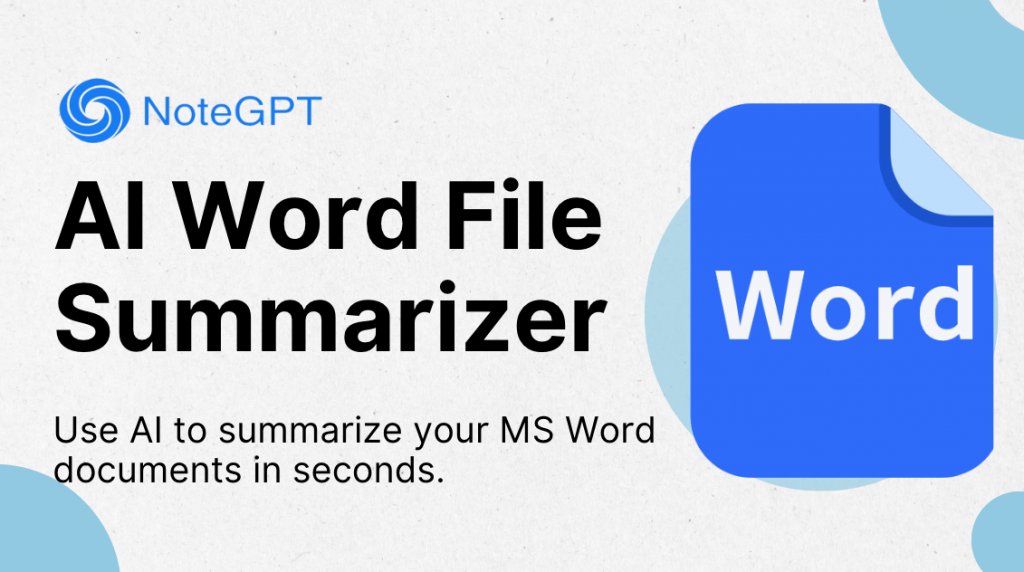
@ilovek8s recommends NoteGPT, a tool designed for summarizing Word documents. It efficiently extracts text, condenses lengthy content, generates mind maps, and enables interactive discussions with the documents. Available for free at https://notegpt.io/word-summary without the need for login.
NoteGPT serves as a digital assistant tailored for Word documents, leveraging artificial intelligence to execute the following functions:
- Text Extraction: It extracts text from docx files.
- AI Long Text Summary: It summarizes extensive texts into concise summaries.
- AI-Generated Mind Maps: It produces visual mind maps that represent the document's content, aiding in understanding and retention.
- AI Dialogue with Word Documents: It facilitates interactive querying of the document, enhancing user engagement and comprehension.
This free tool, accessible without registration, provides an innovative method for managing and learning from Word documents.
Source>>Wix Launches AI Tool for Mobile App Generation
Wix, renowned for web design, now creates mobile apps using AI. Simply verbalize your app concept in plain language; their AI chatbot transforms it into an app, compatible with iOS or Android. This extends their AI website builder, introduced the previous year.
Critics question the reliability, pointing to varied reviews of their AI site builder. Avishai Abrahami, CEO, responds with accolades and statistics: hundreds of thousands of AI-generated sites. He acknowledges AI mistakes but assures ongoing improvements and robust security.
Priced at $99 per month, this tool could disrupt app development, competing with companies and freelancers utilizing AI. Abrahami emphasizes: Wix aims to enhance, not replace, developers, especially in intricate projects.
Generative AI refers to AI that produces content—text, images, code—based on user input. A chatbot-like interface is an interactive UI that simulates human conversation, assisting users in navigating AI tools.
Scores Source>>Motiff, a software under Yuan辅导, announces the release of its AI features with a limited-time free offer.
Summary: Motiff, a software developed by Yuanfudao, has been globally launched with a unified pricing strategy. The professional version costs 24 RMB/month, the development mode is 6 RMB/month, and the enterprise version is 90 RMB/month. Compared to Figma, costs are reduced by over 80%. AI features are available for free temporarily.
Explanation:
- Yuanfudao: An online education company that provides educational software and services.
- Motiff: A design or development tool created by Yuanfudao.
- Unified pricing strategy: A pricing model that is consistent without regional or user differences.
- Figma: An online interface design tool used for price comparison.
- AI features: Features enhanced by artificial intelligence within the software.
Insights: Motiff aims to attract enterprise users, particularly those looking for cost-effective solutions, by significantly reducing costs. The temporary free access to AI features may be a strategy to pave the way for future paid models.
Scores Source>>Google's NotebookLM AI Tool Expands Globally, Enhancing Document Analysis
Google's NotebookLM, an AI note-taking assistant, now serves over 200 countries, including India and the UK. Initially based in the U.S. and previously known as Project Tailwind, it utilizes Google's Gemini 1.5 Pro AI to summarize documents and answer queries based on user-uploaded content. Unlike typical AI chatbots, NotebookLM strictly adheres to source materials, ensuring accuracy and relevance.
With support for 108 languages, it extracts information from various formats such as Google Slides, web URLs, PDFs, and text files. Features like inline citations enable users to verify AI responses against original sources. NotebookLM assists in creating documents like FAQs and study guides, and has been employed for tasks such as summarizing interview transcripts and drafting grant proposals.
Google ensures privacy, stating that user data is not used to train its algorithms, thereby protecting the confidentiality of documents. This free service positions NotebookLM as a formidable competitor in the AI-driven document summarization market, traditionally dominated by paid startup tools.
Scores Source>>Cara: A New Social Platform for Artists Escaping Meta's AI Policies
Artists, frustrated by Meta's AI training on their work, have turned to Cara, a platform that respects copyright. In a week, Cara grew from 40,000 to 650,000 users.
Meta, the owner of Instagram, utilizes public posts to train AI, with only European users able to opt out due to GDPR—a regulation safeguarding personal data. This practice prompted artists to explore alternatives. Jingna Zhang, Cara's founder and a photographer, personally experienced this issue, successfully winning a copyright case against an unauthorized user of her work.
Cara, which combines elements of Instagram and microblogging, ensures that artists can share their work without it being used for AI training. Zhang is also battling tech giants like Google and Stability AI over the unauthorized use of artists' work in their AI systems.
Cara collaborates with the University of Chicago's Glaze project to thwart AI scraping of artists' work. Despite facing financial challenges, including a recent $96,280 hosting bill, Zhang remains steadfast in her mission to protect artists' rights.
In an era where AI poses a threat to creative integrity, Cara serves as a sanctuary, enabling artists to share freely, without the fear of exploitation.
Scores Source>>360 AI Selection Platform Launch, Zhou Hongyi Discusses AI Tool Promotion Strategy
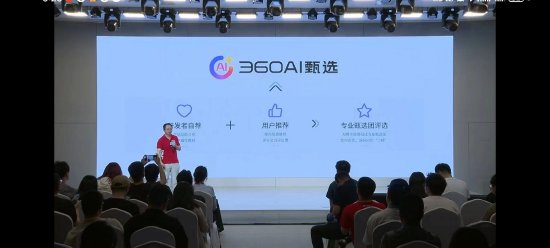
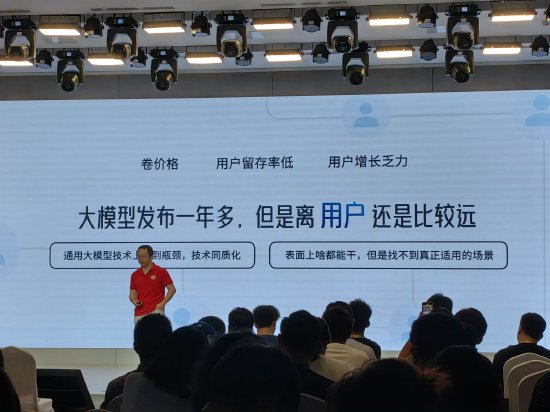
At the 360 AI launch, CEO Zhou Hongyi introduced 360 AI甄选, a platform dedicated to promoting AI tools. He openly discussed his live streaming venture as a strategic marketing approach for AI products.
360 AI甄选 operates by collecting recommendations from both developers and users, which are then evaluated by experts. Tools that receive approval gain increased visibility through influencer networks. Additionally, 360 offers a membership service, granting access to over 100 office tools for an annual fee of 216元.
Zhou acknowledged the challenge of integrating AI into daily life, emphasizing the versatility of AI models but their current lack of compelling applications. He praised the AI tool Kimi for its focused marketing strategy, suggesting it as a model for others to follow.
360's goal is not only to develop AI tools but also to cultivate a marketplace and community, bridging the gap between AI technology and user needs.
Scores Source>>Twitter: HongyuanCao
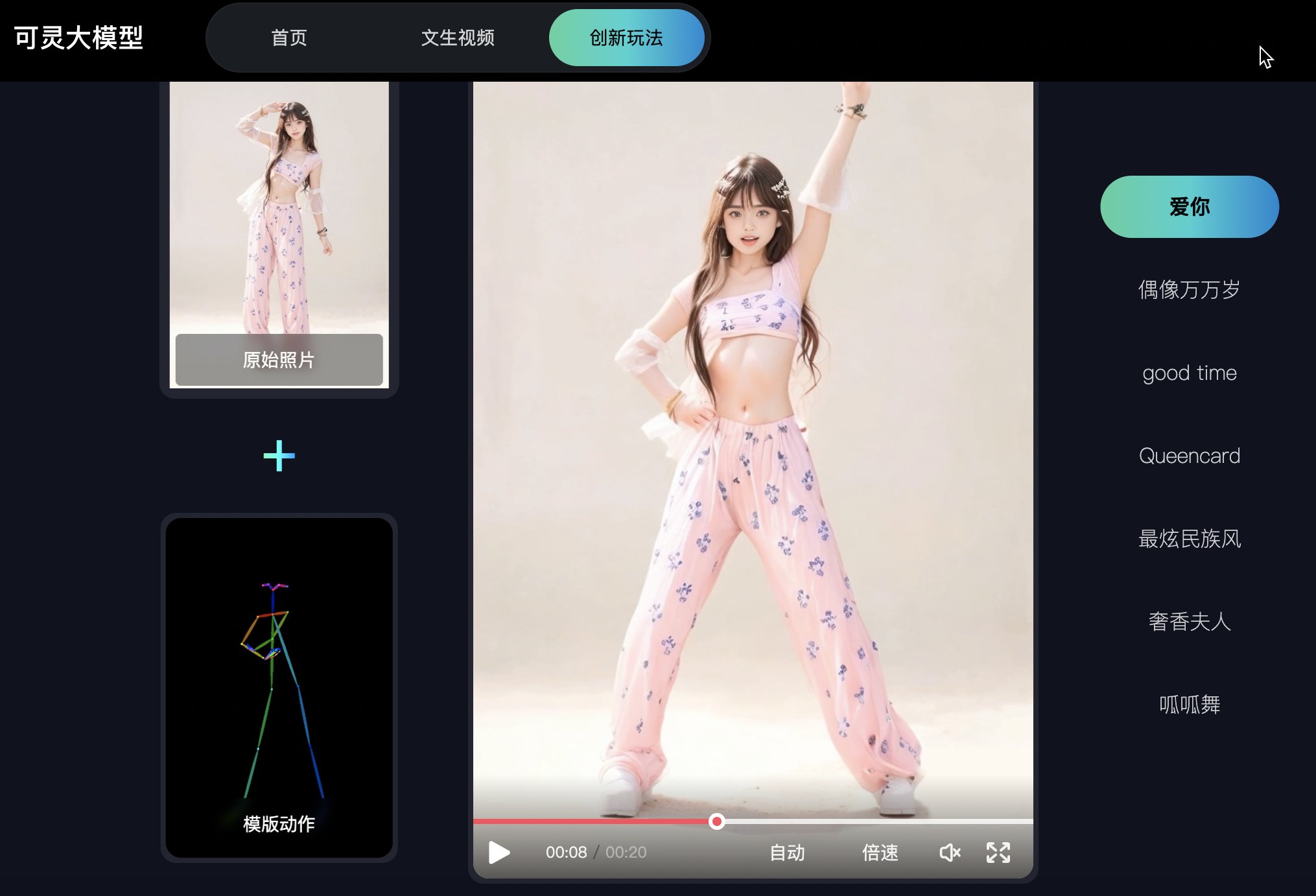
The article praises the virtues of a new model, KLING, developed by the tech company Kuaishou. This model excels in two primary areas: first, it generates videos from text, rivaling the capabilities of Sora; second, it creates videos from images with remarkable smoothness.
KLING, short for "可灵大模型" in Chinese, is a sophisticated AI tool designed to convert written descriptions into video content. This function competes directly with Sora, another leading platform in the field of text-to-video generation. The innovation here lies in the seamless translation of ideas from the page to the screen, a process that typically requires substantial human input.
Additionally, KLING impresses with its ability to transform static images into dynamic videos. The term "丝滑" (silk smooth) aptly describes the fluidity and quality of the video output, suggesting a level of sophistication and ease that is both rare and commendable in this technology.
For those unfamiliar, Kuaishou is a major Chinese social media and video sharing platform, akin to YouTube or TikTok. Their development of KLING underscores a significant advancement in the realm of AI-driven content creation, pushing boundaries in how we visualize and share stories.
Visit the model at: https://kling.kuaishou.com/
This tool, with its dual capabilities, marks a notable stride in the evolution of digital storytelling and content creation.
Source>>Social Media Comments
-
Watch our latest "Roads to Research" discussion with Cohere For AI's Marzieh Fadaee, titled "A Panel Conversation for Research Question Ideation" now at https://tinyurl.com/2vycjmye. —— Cohere For AI
-
Cohere For AI's June Newsletter is here! 🗞️✨ This month, we reflect on the announcement of Aya 23 - a state-of-the-art, multilingual, generative large language research model encompassing 23 different languages. Learn more: https://tinyurl.com/bdz79j6j —— Cohere For AI
-
Following ChatTTS, the ByteDance team introduced the Seed-TTS model, a self-regressive Transformer-based speech generation model capable of producing highly natural and expressive speech. It generates speech virtually indistinguishable from human speech, excelling in emotion control, novel dubbing, and cross-lingual content creation. Below is a demonstration video. —— Austin(坚持每周分享✊)
-
This was a lot of fun to make. I went around my house recording different sounds and then used them as prompts in @udiomusic to create new songs. In this example, I provided a 30-second guitar and vocal riff. https://www.tomsguide.com/ai/a-song-from-any-sound-udio-just-got-a-major-ai-music-update-and-i-put-it-to-the-test-with-7-prompts
no —— Ryan Morrison
- I'm loving the battle between Suno and Udio. It's great for AI music enthusiasts and shows the value of competition and its ability to drive innovation. Today we're announcing a set of updates, starting with a new experimental feature for paid subscribers, audio uploads. You can upload an audio clip of your choice, and extend this clip either forward or backward by 32 seconds using up to 2 minutes of context. Audio uploads...
no —— Ryan Morrison
-
This was a lot of fun to make. I went around my house recording different sounds and then used them as prompts in @udiomusic to create new songs. Check out the full story here: https://www.tomsguide.com/ai/a-song-from-any-sound-udio-just-got-a-major-ai-music-update-and-i-put-it-to-the-test-with-7-prompts —— Ryan Morrison
-
In the era of generative AI, do we still need teams? | Alibaba Research Institute Amid the wave of digital transformation, the rise of artificial intelligence has sparked profound reflections on future work models: Can generative AI truly enhance team performance? Will it replace the collaborative advantages of humans? The research team from Tsinghua SEM conducted two experiments, providing us with the answers. Firstly, they examined 122 teams and 435... —— ginobefun
